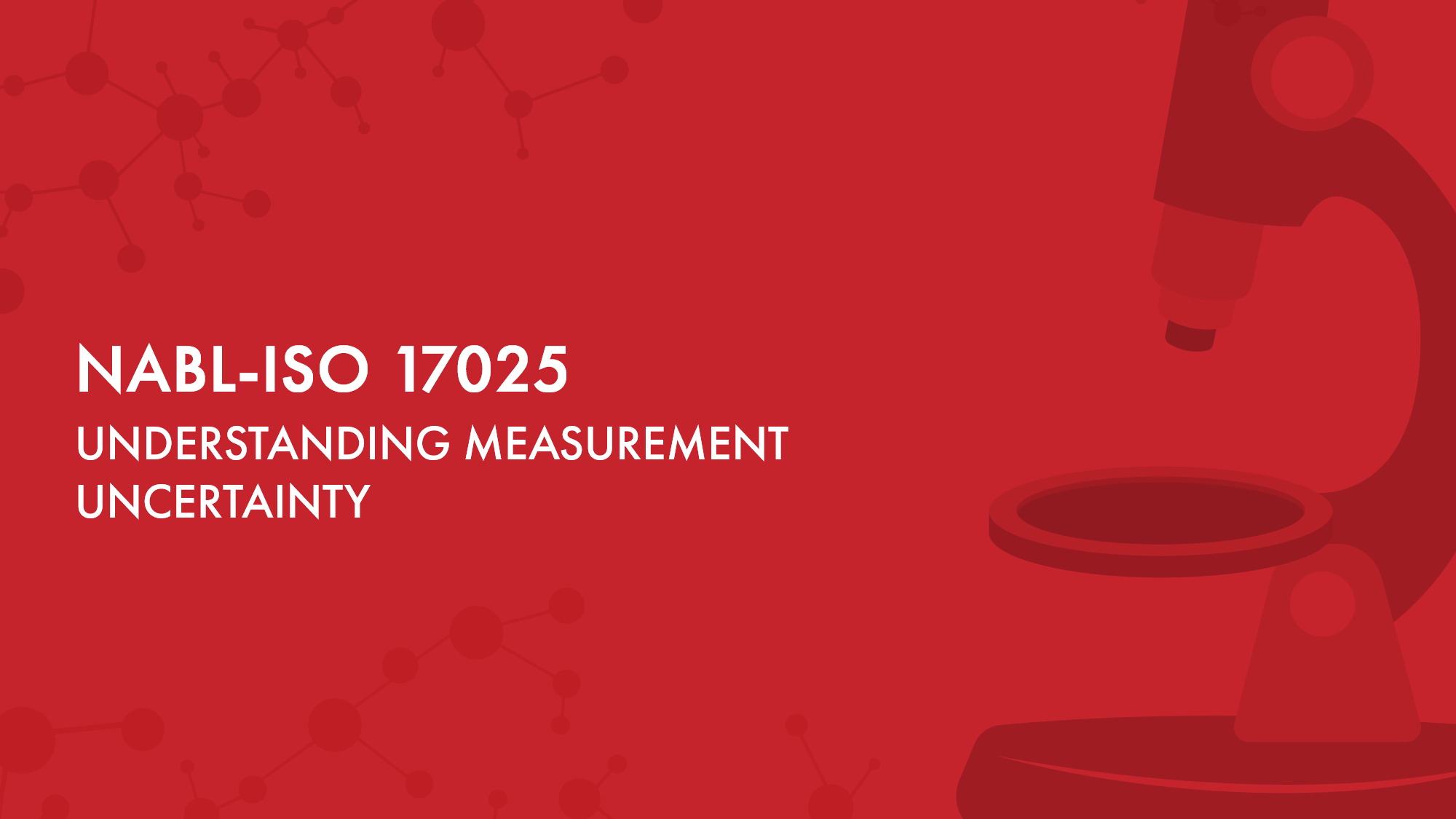
Understand Measurement Uncertainty according to NABL ISO 17025
18th Apr, 2023
No measurement is entirely precise, no matter how excellent the instrument or how perfect the conditions for measurement. This inaccuracy may be due to a variety of factors, such as how the instrument is used, the person carrying out the measurement, the procedure employed, environmental conditions, and more. It is important to understand the associated uncertainty because it is crucial to the quality of the process and the goods and services provided. While there are numerous guides and standards available, they are primarily mathematical. As a result, it is critical to first comprehend the concept and significance of measurement uncertainty.
What is Measurement Process and its Variations?
Measurement process refers to the set of operations involved in obtaining a numerical value for a physical quantity or variable. This process typically involves using an instrument or apparatus to measure the quantity of interest, and then converting the measured value into a numerical representation.
Measurement variation refers to the differences or fluctuations that occur in the measurements taken during a particular process. These variations can be caused by a range of factors, such as the precision of the measuring instrument, the skill and experience of the person performing the measurement, environmental conditions, or even the inherent variability of the object being measured. Measurement variation can take different forms, including random variation, systematic variation, and operator variation. Understanding the sources and nature of variation in measurement is essential for obtaining reliable and accurate results.
What is Measurement Uncertainty?
Measurement uncertainty refers to the doubt or lack of knowledge about the true value of a physical quantity being measured. It is an inherent characteristic of any measurement process due to various factors such as limitations of the measuring instrument, environmental conditions, human error, and the variability of the quantity being measured itself. Measurement uncertainty is usually expressed as a range of values within which the true value is expected to lie with a certain level of confidence. Accurately estimating and reporting the uncertainty associated with a measurement is crucial in determining the reliability and validity of experimental results and ensuring their proper interpretation and use.
Why knowing measurement uncertainty is important?
Measurement uncertainty has an impact on all measurements, and for critical measurements, uncertainty can mean the difference between a pass or fail decision. Accurate measurements are critical in industries such as oil and gas, where miscalculated measurements may result in environmental harm, financial loss, damage to reputation, or even loss of life. Identifying sources of uncertainty in the measurement and test equipment for a given product may be difficult and time-consuming.
How to measure Measurement Uncertainty?
Measuring measurement uncertainty can be a difficult task, especially when identifying the sources of uncertainty that affect a given product or set of measurement and test equipment. However, there are several factors that can contribute to uncertainty, such as;
- Check measuring tool
- working order?
- easy to read?
- calibrated?
- The measuring procedure
- Clear?
- difficult to carry out?
- Operator skill
- sufficiently trained?
- Adequate level of skill?
- enough eyesight?
- Are their reaction times quick enough?
- Environment
- measurement affected by temperature? By humidity? By pressure?
- Carry forwarded uncertainty –
- has the tool been calibrated according to traceable accredited standards?
- All tools carry their own level of uncertainty and this must be taken account of in the final calculation.
Calculating total measurement uncertainty involves several components, with standard deviation being a crucial one. Simply taking one measurement is not enough, and repeating the measurement multiple times can help determine the normal difference between measurements. This process can provide information on the A-type uncertainty components, which are calculated using standard deviation. It is essential to keep the standard deviation in mind during the calibration process as it is a significant part of total uncertainty. Another significant source of uncertainty comes from the reference standard or calibrator used in the measurement or calibration. Selecting an appropriate reference standard and paying attention to the total uncertainty documented by the laboratory for the reference standard can help mitigate this uncertainty. Other components, including those mentioned earlier, contribute to measurement uncertainty and are classified as type B uncertainty components.
Report Measurement Uncertainty
Reporting measurement uncertainty must provide accurate, clear, unambiguous, and objective results and include all information necessary for the interpretation of the results. Calibration laboratories must always include the measurement uncertainty on calibration certificates. However, for testing laboratories, they have a choice. The uncertainty must be included on the report when it is necessary for the interpretation of the results and when the measurement uncertainty is relevant to the validity or application of the test results, when the customer’s instruction requires it, or when the measurement uncertainty affects conformity to a specification limit.
Measurement Uncertainty in ISO/IEC 17025:2017
ISO/IEC 17025:2017 is the international standard for testing and calibration laboratories. It sets out the requirements for the competence, impartiality, and consistent operation of these laboratories. One of the key requirements of this standard is that laboratories must be able to demonstrate that they have a well-established measurement uncertainty (MU) estimation process for all of their measurements. This means that laboratories must have a comprehensive understanding of the sources of uncertainty that affect their measurements, and they must be able to estimate the size of these uncertainties using appropriate statistical methods. The ISO/IEC 17025:2017 standard provides guidance on how to carry out MU estimation, and it requires laboratories to report their measurement results with associated uncertainty values. By complying with this standard, laboratories can provide their clients with greater confidence in the accuracy and reliability of their test and calibration results. Know more.
How 4C Can Help Your Organization Measure Measurement Uncertainty and Get NABL-ISO 17025 Certification?
The 4C team comprises of esteemed consultants who are qualified in both NABL and ISO 17025, providing laboratories with the necessary expertise to enhance their internal and external results, leading to better growth. With a track record of assisting over 1000+ labs with NABL-ISO 17025 accreditation, we have acquired in-depth knowledge and skills for efficient implementation of the accreditation that will maximize your business potential. Our experience includes facilitating NABL accreditation for 50+ ILC/PT testing labs, which has allowed us to learn new techniques for simplified NABL-ISO 17025 accreditation, enabling our clients to get the best out of the ISO 17025 standard. To improve your business performance, proficiency in testing competencies, measure measurement uncertainty, and internal operational efficiency. Contact us now
